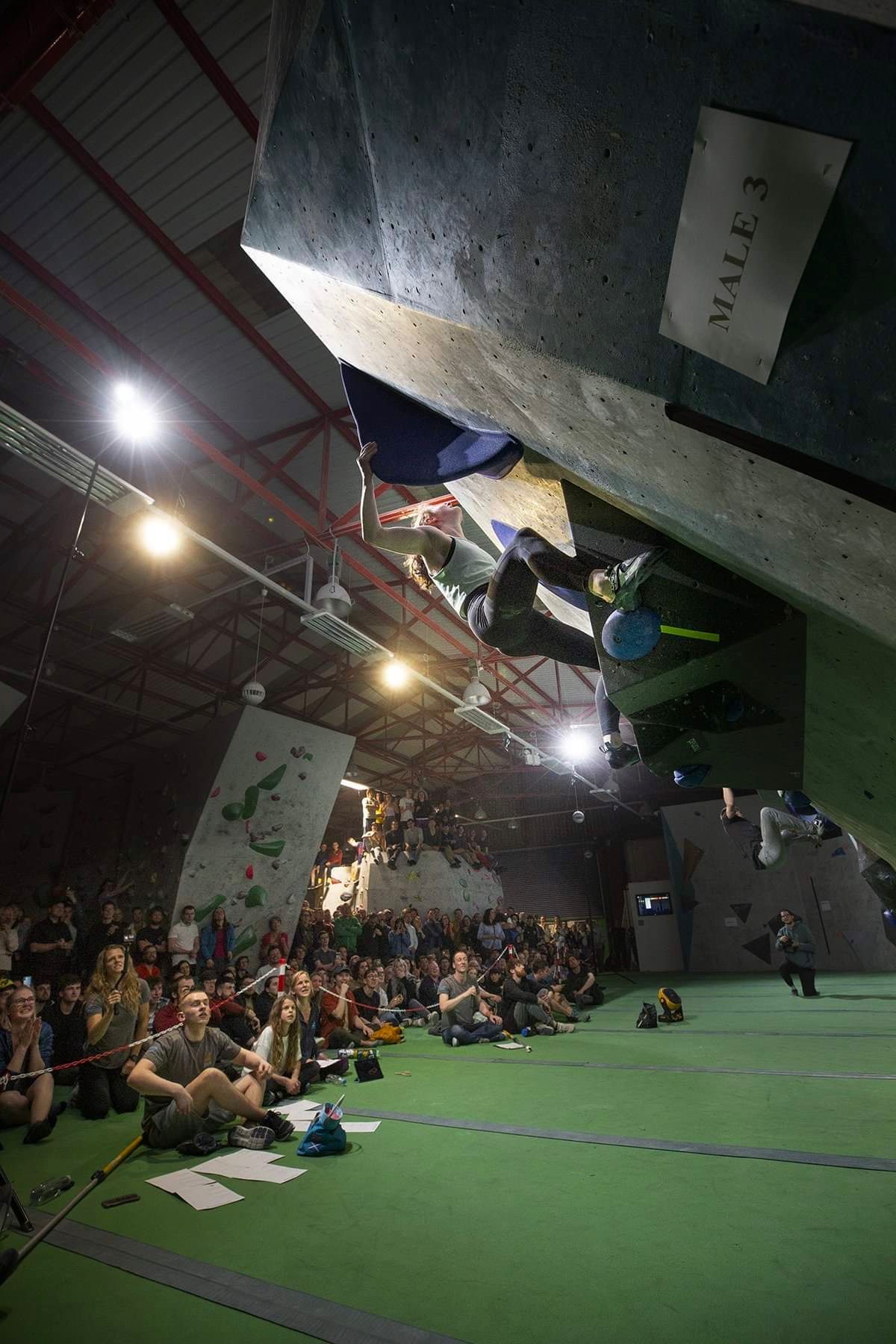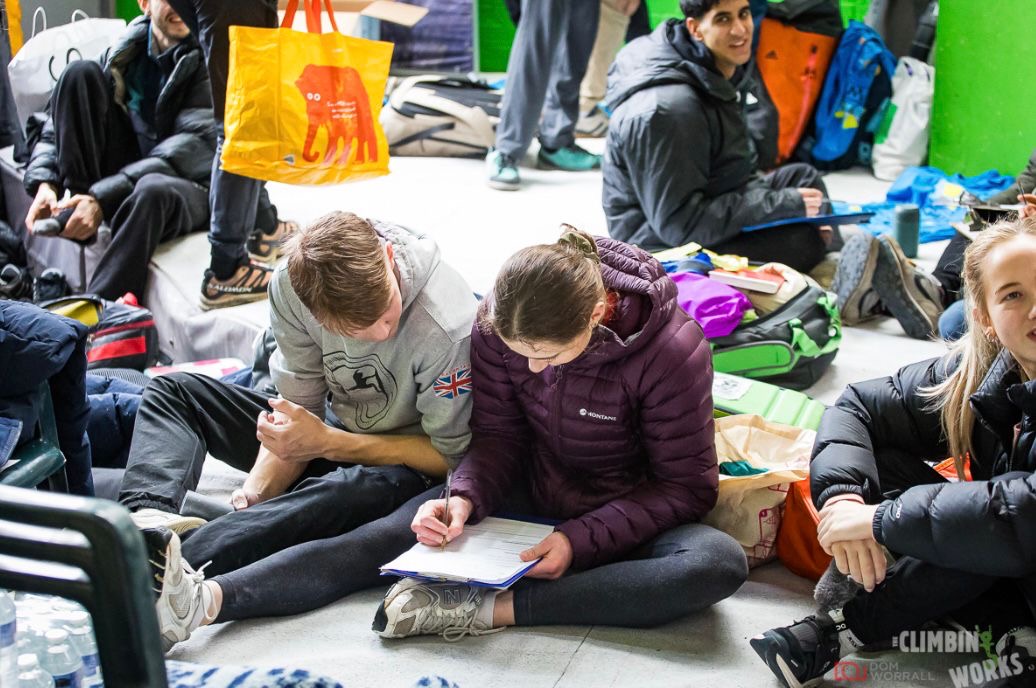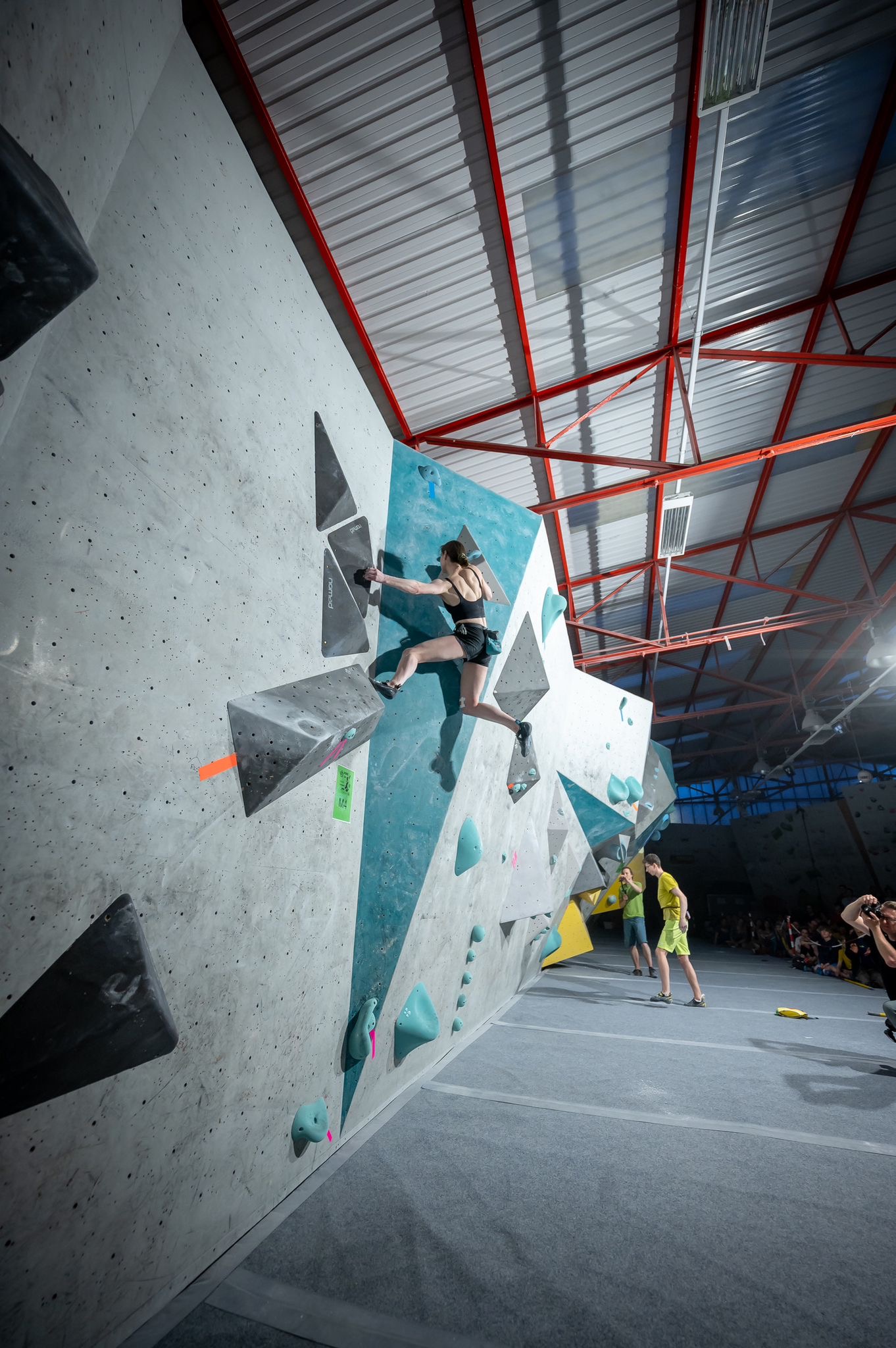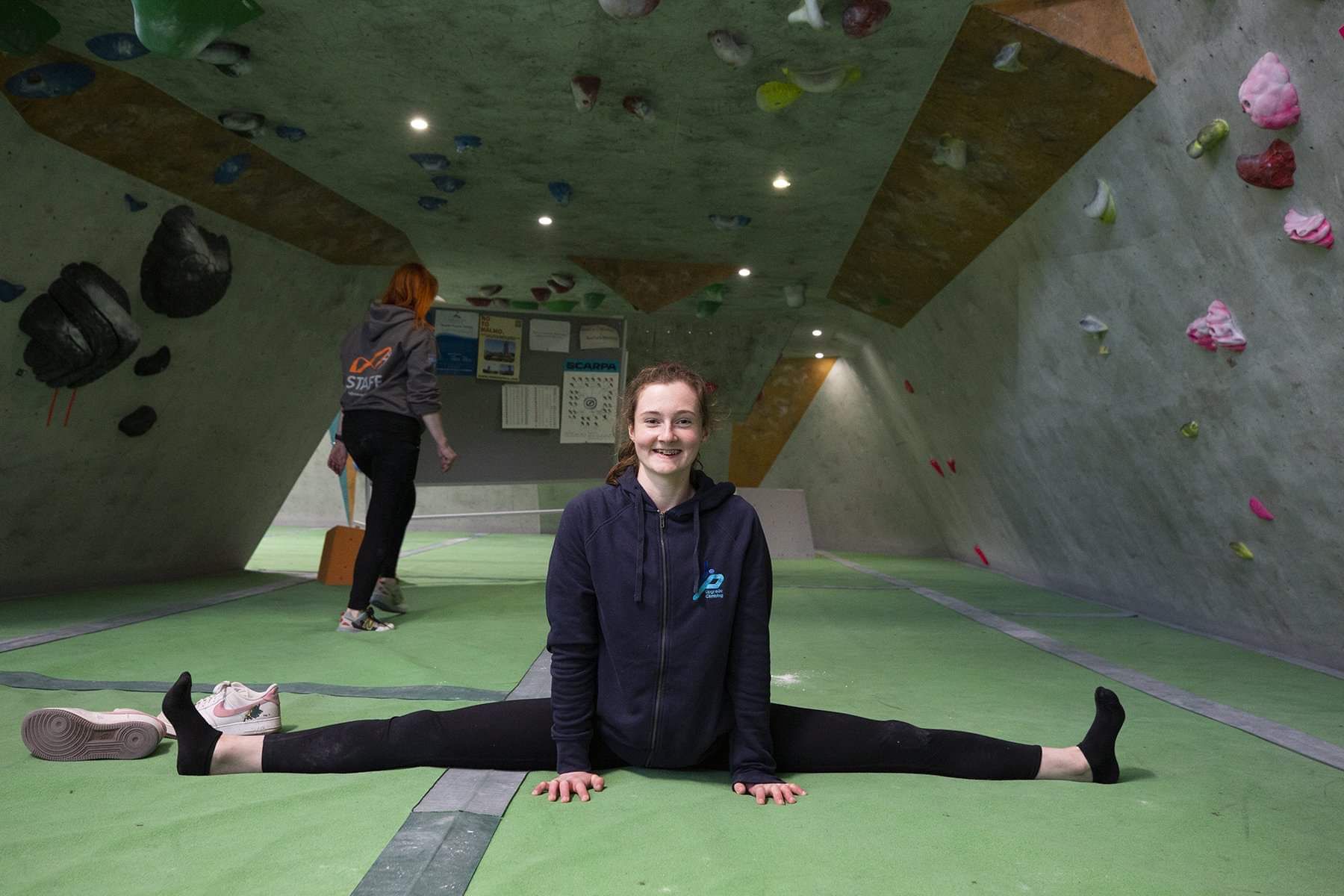
When athletes first arrive at an event, their first stop is the isolation zone. Isolation is the area where competitors stay from before their round until they go out to compete, and is quite a mystery to outsiders! Its purpose is to ensure an equal playing field for all climbers, preventing those who climb later from watching and copying the earlier athletes. Facilities in isolation zones vary widely. Usually there's a place to sit and a few walls to warm up on, though the quality of these can differ greatly. I've encountered some rather bizarre isolation zones: trampolines, slides, a wooden board with a lettuce screwed on, and even a magician! Unfortunately, not all isolation zones are great - some lack basic amenities like proper toilets and warm-up spaces.
If you’re not fortunate enough to have an early start position, you can end up spending a LONG time in isolation. At my first Bouldering World Cup in Innsbruck, I was in isolation for around 4.5 hours, which meant I had about 2.5 hours to kill before warming up. With large fields, rain delays, and other unexpected events, I know people who have spent over 8 hours in isolation! Competitors have to find ways to entertain themselves until it's time to warm up. With no phones allowed, card games, chess, and crochet are popular pastimes.
Each athlete will have their own warm up routine which stays relatively consistent from event to event. Coaches play an important warming up the athletes by setting boulders, time keeping and monitoring any schedule changes.
Before the round starts, the climbers may get the chance to look at the climbs and figure out a plan. You might have watched climbers from different countries reading routes or boulders together. I used to be suspicious that people would try to trick others into using the wrong beta, but I’m glad to say that in my experience this has never been the case. Generally, the athletes are all lovely, and despite competing against each other, it often feels more like climbers versus the wall. This camaraderie is a defining feature of the climbing community, both on and off the screen, and is one of the reasons I love this sport.

After warming up, before you compete you head to ‘the call zone.’ This is a space with chairs for athletes to sit both before and during the round. This area is normally right behind the wall, so you can determine how others are performing based on hearing the crowd reactions and seeing how quickly other competitors return. Depending on your own confidence level this can either be reassuring, or very off putting. The call zone is not a chatty place. Some people wear headphones to block out the noise, whilst others (including myself) just embrace the atmosphere before heading out to compete.
When you finally make it to the mats, the most important thing is staying focused. Almost anyone in a semi-final or final round will have the potential to climb what is set for them, the difficulty comes from executing it first try or within the time. When I am competing, I feel so engaged in the route, that I only hear the crowd when I’ve made it the top of the climb. It’s a strange feeling to be aware of the thousands of people of people cheering you on, but unable to hear them.

After the competition comes the medal ceremony, but then it’s still not home time for the athletes. Almost every World or European competition includes drug testing. These measures are essential to maintain the integrity of our sport, but they can be quite inconvenient. Athletes often have to wait for hours after a competition until they're able to provide a correctly hydrated urine sample. Not quite the champagne spraying ending that gets broadcast.
So next time you watch a climbing event, I hope you feel a little more knowledgeable about what is going on for the athletes when they aren’t in front of the cameras!

